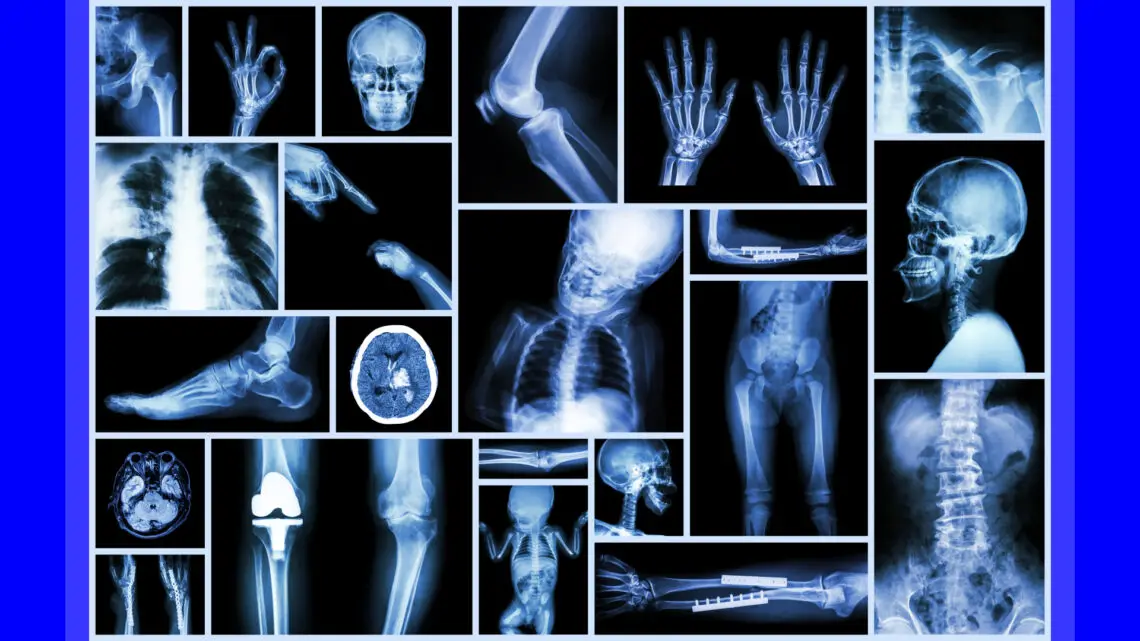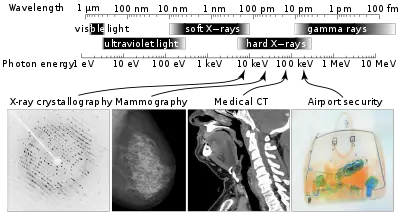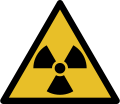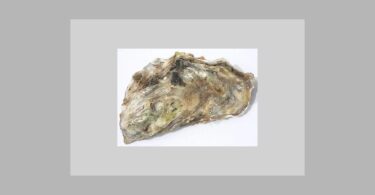An X-ray, or, much less commonly, X-radiation, is a penetrating form of high-energy electromagnetic radiation. Most X-rays have a wavelength ranging from 10 picometers to 10 nanometers, corresponding to frequencies in the range 30 petahertz to 30 exahertz (30×1015 Hz to 30×1018 Hz) and energies in the range 145 eV to 124 keV. X-ray wavelengths are shorter than those of UV rays and typically longer than those of gamma rays.
In many languages, X-radiation is referred to as Röentgen radiation, after the German scientist Wilhelm Conrad Röentgen, who discovered it on November 8, 1895. He named it X-radiation to signify an unknown type of radiation. Spellings of X-ray(s) in English include the variants x-ray(s), x ray(s), and X ray(s).
The most familiar use of x-rays is checking for fractures (broken bones), but x-rays are also used in other ways. For example, chest x-rays can spot pneumonia. Mammograms use x-rays to look for breast cancer. Also called: Radiography
Energy ranges
X-rays are part of the electromagnetic spectrum, with wavelengths shorter than UV light. Different applications use different parts of the X-ray spectrum.
Soft and hard X-rays
X-rays with high photon energies above 5–10 keV (below 0.2–0.1 nm wavelength) are called hard X-rays, while those with lower energy (and longer wavelength) are called soft X-rays. The intermediate range with photon energies of several keV is often referred to as tender X-rays.
Due to their penetrating ability, hard X-rays are widely used to image the inside of objects, e.g., in medical radiography and airport security.
The term X-ray is metonymically used to refer to a radiographic image produced using this method, in addition to the method itself. Since the wavelengths of hard X-rays are similar to the size of atoms, they are also useful for determining crystal structures by X-ray crystallography. By contrast, soft X-rays are easily absorbed in air; the attenuation length of 600 eV (~2 nm) X-rays in water is less than 1 micrometer.
Gamma rays
There is no consensus for a definition distinguishing between X-rays and gamma rays. One common practice is to distinguish between the two types of radiation based on their source: X-rays are emitted by electrons, while gamma rays are emitted by the atomic nucleus.
This definition has several problems: other processes can also generate these high-energy photons, or sometimes the method of generation is not known. One common alternative is to distinguish X- and gamma radiation on the basis of wavelength (or, equivalently, frequency or photon energy), with radiation shorter than some arbitrary wavelength, such as 10−11 m (0.1 Å), defined as gamma radiation.
This criterion assigns a photon to an unambiguous category, but is only possible if wavelength is known. (Some measurement techniques do not distinguish between detected wavelengths.) However, these two definitions often coincide since the electromagnetic radiation emitted by X-ray tubes generally has a longer wavelength and lower photon energy than the radiation emitted by radioactive nuclei.
Occasionally, one term or the other is used in specific contexts due to historical precedent, based on measurement (detection) technique, or based on their intended use rather than their wavelength or source. Thus, gamma-rays generated for medical and industrial uses, for example radiotherapy, in the ranges of 6–20 MeV, can in this context also be referred to as X-rays.
Properties
Ionizing radiation hazard symbol
X-ray photons carry enough energy to ionize atoms and disrupt molecular bonds. This makes it a type of ionizing radiation, and therefore harmful to living tissue.
A very high radiation dose over a short period of time causes radiation sickness, while lower doses can give an increased risk of radiation-induced cancer.
In medical imaging, this increased cancer risk is generally greatly outweighed by the benefits of the examination.
The ionizing capability of X-rays can be utilized in cancer treatment to kill malignant cells using radiation therapy. It is also used for material characterization using X-ray spectroscopy.
Materia Medica
Vial containing alcohol exposed to X-ray
If Constantine Hering had never given the homoeopathic profession anything but his admirable pathogenesis of Lachesis he would have been remembered in gratitude for all time by the homoeopathic world.
If Bernhardt Fincke had never given the homoeopathic profession anything but his proving of the X-ray, his name, too, would be held in grateful remembrance by posterity, for its possibilities in the cure of many of the most obstinate of chronic diseases appear almost limitless.
We are indebted to Dr. John B. Campbell, one the original provers, for the discovery of the great value of this dynamic agent in rousing the reactive vitality of the system, both mentally and physically, and thus bringing to the surface suppressed symptoms of persons laboring under a combination of dyscrasia, the miasms of Hahnemann. This is especially true of the deep-seated constitutional ailments, sycotic in character, which so often terminate in malignant disease, especially cancer.
When the sycotic or syphilitic virus is grafted on a psoric or tubercular diathesis; when from the paucity of presenting symptoms it is almost impossible to be certain of the predominant diathesis, in consequence of which the best selected antipsoric, Calcarea, Medorrhinum, Psorinum, Sepia, Sulphur, Syphilinum, or Tuberculinum, fails to relieve or to rouse the overpowered vitality to a sufficient degree to throw off or bring to the surface the predominant toxin, the X-ray bids fair to be our curative remedy.
Every physician who has had even a limited experience in the treatment of the toxic effect of the X-rays on either a bone or soft tissue will not need any proof of its deep-seated character and the extreme difficulty under any form of treatment of arousing the overpowered vitality and effecting a cure.
An X-ray burn, so-called, whether of the bone or skin, is almost impossible to heal, and despite the best efforts of the ablest practitioner, the best treatment known to medical science of the present day, is often fatal.
The basis of our understanding and utility of potentized X-ray must be the severe and detrimental effects of repeated exposure to these rays so common these days.
Our X-ray will, by stimulating cellular metabolism, arouses the reactive vitality (physical and mental) and acting centrifugally (from centre to periphery), bring to surface (like Aur-m.), suppressed symptoms (especially gonorrhoeal or mixed miasm) or eruptions (with degenerative or multi-infectious history- Carc.).
SILENT AILMENT FROM – Common sources of radiation injury include ultra-violet radiations from the Sun and man-made sources, microwave radiation from radar and ovens and other appliances, high-intensity ultrasound and ionising radiations from natural and man-made sources.
Ultra-violet radiation, produced by the sun, is largely absorbed by the atmosphere of earth. However, owing to decreased ozone layer (the ‘green-house effect’), ultra-violet radiation has now considerably increased.
A general suppression of all cellular elements of blood (except the heterophile leucocytes which increases). Adverse changes in blood, lymphatics and bone marrow. Obstinate anaemia and even leukemia. Fats exposed there to become toxic. Repeated exposure to Roentgen (X-ray) has produced skin lesions often followed by cancer. Distressing pain.
Sexual glands are particularly affected. Atrophy of ovaries and testicles. Sterility. Changes take place in the blood lymphatics and bone marrow. Anaemia and leukaemia. Corresponds to stubbornness as in burns, they refuse to heal. Psoriasis.
Has the property of stimulating cellular metabolism. Arouses the reactive vitality, mentally and physically. Brings to the surface suppressed symptoms, especially sycotic and those due to mixed infections. Its homoeopathic action is thus centrifugal, towards the periphery.
On the epidermis
I Degree: hyperaemia and infiltration of the skin with exfoliation. Atrophy of the appendages of skin, glands, hair, nails may follow.
II Degree: dermatitis: blisters, watery growths with intense pains.
III Degree: total destruction and sloughing of tissues, non healing ulcers, ultimately end in(dry)gangrene. Destruction of blood- forming elements in bone marrow. Bone necrosis. Osteomyelitis.
Deep seated dyscrasias and chronicity-symptoms go on intermitting and recurring stubbornly (at regular intervals) or symptoms disappear with detriment to the patient due to a deep seated sycotic diathesis, resulting either from a suppressed gonorrhoea or cauterized condylomata etc
With Medorrhinum. it shares the distinction of being a sycotic Sulph.; may even be called a more chronic counterpart of Med.
MIND
Mind and Disposition. Mental irritability. Clearing up of mental function after sharp stabbing pain in left temple staggering him, the heart feeling the impulse immediately. Mental processes not clear, writes long words in letters. Mental condition upset during profuse menstruation, would like to kill somebody.
Mentally irritability. Clearing up of mental function after sharp stabbing pain in left temple staggering him, the heart feeling the impulse immediately.
Mental depression after snatches of sleep for twelve days.
Mental processes not clear, writes wrong words in letters.
Mental condition upset during profuse menstruation, would like to kill somebody.
Misanthropy during renal colic; did not want to answer questions, did not want to see anybody or to talk to anybody, being completely prostrated.
Lippi special symptoms
- Repeated exposure to Roentgen (X-Ray) has produced skin lesions often followed by cancer.
- Distressing pain (Ars., Bell., Kreos.) (Br.).
- Sexual glands are particularly affected; atrophy of the ovaries (Apis, Bar-M., Carb-S., Con., Helon., Iod., Plb.) and testicles (Aur., Bar-C., Caps., Carb-An., Gels., Iod., Kali-I., Lyss., Plb., Staph., Zinc.) (Br.).
- Re-establishes suppressed gonorrhoea (Med., Thuj.) (Br.).
- Sexual desire lost (Agn., Calad., Graph., Lyc., Nat-M.) (Br.).
- Lewd dreams (Calc., Kali-P., Phos., Staph.) (Br.).
- Sterility (Aur., Bor., Nat-C., Nat-M., Sep., Zinc.) (Br.).
- Anaemia and leukemia (Apis, Calc-P., Ferr., Graph., Kali-P., Lach., Merc., Nit-Ac., Puls., Sep.) (Br.).
- Throat painful on swallowing (Bell., Merc., Nit-Ac.) (Br.).
- General tired and sick feeling (Gels., Kali-P., Lach.) (Br.).
- Palms rough and scaly (Kali-Ars.) (Br.).
- Rheumatic pains (Bry., Kali-I., Rhus-T.) (Br.).
- PSORIASIS (Ars., Kali-Ars., Merc., Sep.) (Br.).
- Warty growths (Nit-Ac., Thuj.) (Br.).
- Skin dry, wrinkled (Ars.) (Br.).
- DRY itching eczema (Alum., Mezer., Psor., Sep., Tell.) (Br.).
- > Painful cracks (Graph., Nat-M., Petr.) (Br.).
AGGRAVATION –
In the open air; in bed; in the evening; on swallowing; and at night.
AMELIORATION –
From warm application
RELATIONSHIP
Compare: Ars., Aur., Calc., Ferr., Graph., Iod., Kali-Ars., Kali-C., Lach., Lyc., Merc., Nit-Ac., Sep. and Thuj.







